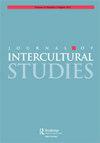How the Pengobeng Continues to Exist in the Batik Industry? Field Notes from the Sangiran Archeological Site
IF 1
Q3 SOCIOLOGY
引用次数: 0
Abstract
ABSTRACT Food, a result of local production and consumption, influences by culture, race, and ethnicity. It provides multisensory experiences that can be observed, expressed, smelled, tasted, and touched. However, this study aims to provide a comprehensive understanding of the batik industry and its practitioners in Sangiran Regency. Batik, an historic fabric of Indonesia, is an integral part of Sangiran, an Indonesian World Heritage site highlighting its origins. Drawing on the theory of Briggs (2005. The use of indigenous knowledge in development: Problems and challenges. Progress in Development Studies, 5 (2), 99–114) on indigenous knowledge, this field note explores the significance of batik filling, specifically within the daily lives of batik crafters. This study, conducted in Indonesia, has provided valuable insights from the perspectives of these individuals. Through a three-month ethnographic work, it was discovered that batik filling symbolizes not only an artistic element but also the culinary traditions of the Javanese community. Additionally, it emphasizes the pivotal role of pengobeng, who are predominantly women, in forming a profound connection to daily life through their memories. The results showed that batik filling serves as a medium for food nostalgia in women, asserting their presence and importance within the batik industry.蜡染行业如何继续存在?桑吉兰考古遗址的现场记录
食物是当地生产和消费的结果,受到文化、种族和民族的影响。它提供了可以观察、表达、闻到、尝到和触摸的多感官体验。然而,本研究的目的是提供一个全面的了解蜡染行业及其从业者在桑吉兰摄政。蜡染是印度尼西亚的一种历史织物,是桑吉兰的一个组成部分,桑吉兰是印度尼西亚的世界遗产,突出了它的起源。借鉴布里格斯(2005)的理论。在发展中使用本土知识:问题和挑战。《发展研究进展》,5(2),99-114)关于土著知识,这个实地记录探讨了蜡染填充的重要性,特别是在蜡染工匠的日常生活中。这项在印度尼西亚进行的研究从这些个体的角度提供了有价值的见解。经过为期三个月的民族志工作,发现蜡染馅不仅象征着一种艺术元素,而且象征着爪哇社区的烹饪传统。此外,它还强调了pengobeng(以女性为主)在通过记忆与日常生活建立深刻联系方面的关键作用。结果表明,蜡染馅料是女性对食物怀旧的媒介,表明了她们在蜡染行业中的存在和重要性。
本文章由计算机程序翻译,如有差异,请以英文原文为准。
求助全文
约1分钟内获得全文
求助全文
来源期刊

Journal of Intercultural Studies
SOCIOLOGY-
CiteScore
1.80
自引率
10.00%
发文量
67
期刊介绍:
Journal of Intercultural Studies showcases innovative scholarship about emerging cultural formations, intercultural negotiations and contemporary challenges to cultures and identities. It welcomes theoretically informed articles from diverse disciplines that contribute to the following discussions: -Reconceptualising notions of nationhood, citizenship and belonging; -Questioning theories of diaspora, transnationalism, hybridity and ‘border crossing’, and their contextualised applications; -Exploring the contemporary sociocultural formations of whiteness, ethnicity, racialization, postcolonialism and indigeneity -Examining how past and contemporary key scholars can inform current thinking on intercultural knowledge, multiculturalism, race and cultural identity. Journal of Intercultural Studies is an international, interdisciplinary journal that particularly encourages contributions from scholars in cultural studies, sociology, migration studies, literary studies, gender studies, anthropology, cultural geography, urban studies, race and ethnic studies.
 求助内容:
求助内容: 应助结果提醒方式:
应助结果提醒方式:


